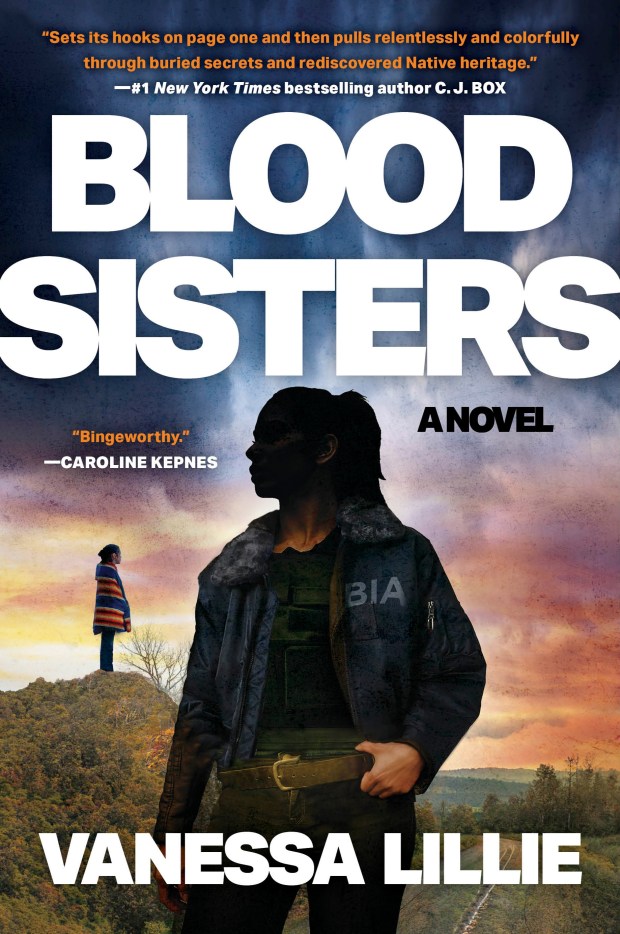Blood
Book review: Disappearance of Cherokee women fuels gripping ‘Blood Sisters’
‘Blood Sisters’ by Vanessa Lillie. Berkley, 384 pages, $27
Vanessa Lillie expertly balances a compassionate look at Native American culture and a comprehensive examination of the treatment by the government and white settlers, nTFL-L-book-blood-sistersever once allowing these issues to override the gripping plot of “Blood Sisters.”
David Grann’s historical book “Killers of the Flower Moon: The Osage Murders and the Birth of the FBI” and the film based on his non-fiction have renewed interest in the plight and violence inflicted on Native Americans. Lillie’s meticulous research and skillful approach in “Blood Sisters” further explores this, joining other Native American mystery writers such as Ramona Emerson (“Shutter”), David Heska Wanbli Weiden (“Winter Counts”) and Marcie R. Rendon (“Sinister Graves”) telling their stories.
Lillie, an enrolled citizen of the Cherokee Nation of Oklahoma, focuses “Blood Sisters” on the disappearances of Native American women, a tragedy often ignored by local authorities.
The launch of a new series, “Blood Sisters” introduces Cherokee archaeologist Syd Walker, who works for the Rhode Island branch of the Bureau of Indian Affairs (BIA), which has come a long way since its original mission to “exterminate Native people, culture, and ways of life.” Now the agency is revising its image by trying to establish trust with indigenous communities.
Syd’s supervisor reassigns her to the Oklahoma branch when her identification card, dating back to her college internship with the BIA, is found inside a skull near her parents’ land.
Syd hasn’t been to her hometown of Picher in three years. She’s still haunted by dark memories when, 15 years before, two masked men invaded the trailer where she, her sister Emma Lou and best friend Luna Myers were watching TV. Luna and her family were eventually killed. The crime profoundly affected the community, Syd and Emma Lou. Syd went to college where she met her now-wife Mal and found a career while Emma Lou became an opiate addict.
Although she has stayed away from Picher, Syd keeps in contact with her parents and sends regular gifts to Emma Lou’s daughter, Gracie. But long-distance contact has shielded Syd from what has been going on with Picher and her family.
Unbridled mining has ravaged Picher, leaving the town economically depressed, many houses uninhabitable, some near collapse. Offers from the government to buy some houses has divided the residents. Syd’s family appear to be in league with people Syd considers criminals.
Syd has tried to distance herself from Picher, but her boss is right when she says, “The places we’re from live within our DNA.”
Syd learns that Emma Lou vanished a few days ago, one of several indigenous women who recently disappeared from the area. Her family insist that Emma Lou has kicked her drug habit, and that her disappearance is out of character.
Lillie effectively delivers a moving story melding Native American rights and culture, a broken community and fully realized characters into a concise thriller that contains just enough action to keep the story believable. The intelligent Syd, with her complicated life and dark memories, is a strong character. Set in 2008 with frequent dips into the distant past, “Blood Sisters” works well as a historical mystery and a story about families, Native Americans and prejudice.
“Blood Sisters” is an excellent start to what should prove to be a long-running series.

